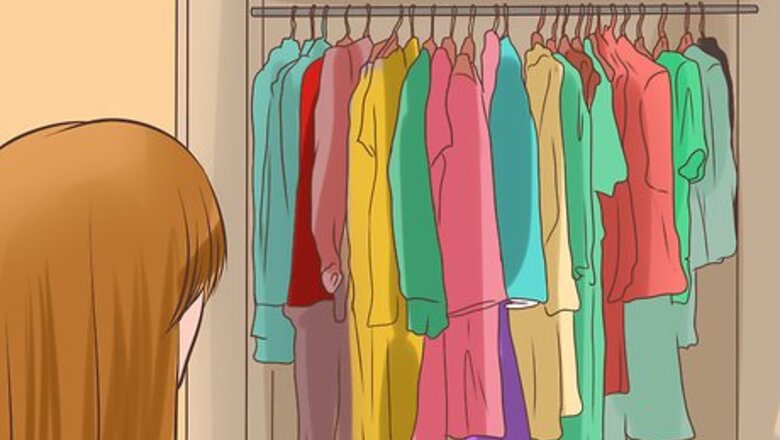
views
Defining Your Style
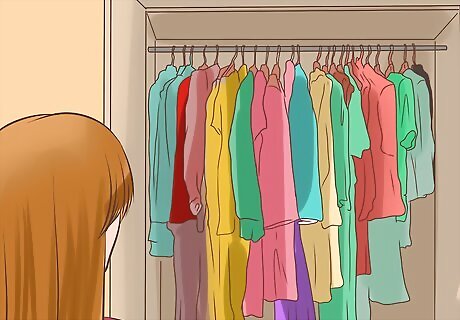
Inspect your current wardrobe. Lay your favorite clothes on your bed or on a table. Choose pieces that you like or wear often. Look at all the possible combinations of clothing, and see if you tend towards a particular style (such as bohemian, rock chick, vintage, geek chic, etc.). Note which pieces are your favorite, and ask yourself why. Once you determine this, you can start looking for pieces that have similar features. For each individual article of clothing, you should note the: Fit: How does the piece adhere to your body? Is it tight in certain places or baggy? Does it flare at the hips, or is it a straight piece? Texture: Does the material lie flat, or is there a 3D effect? Are there ruffles, ruching, or pleats? Are there sequins, rhinestones, or other embellishments? Color: Is it a neutral, such as black, navy, khaki, or white? Is it a jewel tone, such as teal, emerald green, or gold? Or is it a pastel, such as mint, light pink, or lavender? Print: Is it patterned or solid? Are the stripes vertical, horizontal, diagonal, or a mix? Is there a flower or animal print? Are there blocks of color?

Determine how you want to appear to others. Think about the specific terms you want others to say about you. For example, perhaps you want to appear bubbly and friendly. Maybe you want to be called sophisticated and daring. You might even want to look intelligent and sensible. Write these words down in a list, and think about your style choices can help you fulfill these terms.
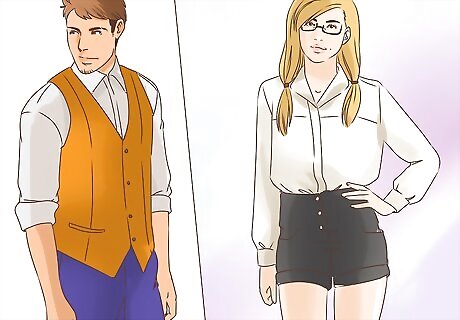
Find a fashion archetype. There are many different categories of fashion that can help you refine your search for the perfect style. You may find that you conform to just one archetype or that there are many that fit your personality. Some popular ones include: Classic: you may have a conservative style. You may tend towards neutral colors with minimal decorations. Your clothing may be described as professional. Trendy: you may like to follow the latest fashions, and your clothing changes based on what's popular on the red carpet. Romantic: if you're a woman, you may tend towards flowing or ruffled pieces. If you're a man, you may be attracted to old fashioned suits and vintage attire. Bohemian: you may like baggier clothing with distinctive patterns such as paisley or tie-dye. Your clothing may appear rustic or outdoorsy. You might consider yourself a nature lover. Sporty: You may tend to wear active wear as your casual clothing. You may wear tennis shoes around town, and you may enjoy outdoor activities.
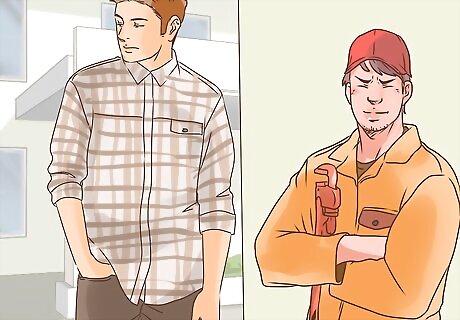
Consider your lifestyle. Think about the different types of clothing you need for various situations in your life. Write down all of the different social and professional situations you find yourself in during a typical week. Think about how you dress for each. How do you dress for work? How do you dress to run errands? What types of activities do you do with friends? How do you dress for each? What types of special events (such as weddings) are you invited to? What do you wear there?
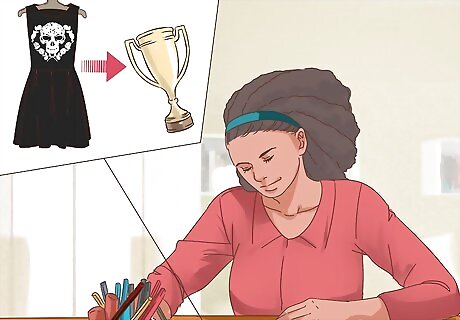
Set fashion goals. Once you have examined what you like about your wardrobe, think about what you don’t like. Identify those gaps in your style that you want to fill. Do you feel limited by the small selection of colors? Are you uncertain if any of your clothes fit you properly? Once you have decided, write down a list of fashion goals that solve these problems. Some ideas: “I will find clothes that better fit me.” “I will buy more jackets and clothing that I can layer.” “I will find more accessories that I can mix and match.” “I will increase my shoe selection.” “I will start wearing bolder colors.”
Searching For Inspiration

Surf fashion blogs. Style blogs, online magazines, Instagram feeds, and Pinterest boards are great sources of trendy clothing. You can find hundreds of different styles and combinations. They can help you learn how certain pieces of clothing work with other pieces. If you find a style that you like, you can pin it to a Pinterest board or save it to your computer. When an outfit or ensemble catches your eye, try to determine what you like about. Does it have a certain cut or fit that you think is flattering? Does it have a certain color palette that you enjoy? Does it make you think of certain qualities that you want to exude, such as glamor, sexiness, or strength? If so, write down these words. How was the outfit put together? What types of clothing were involved (suits, dresses, layered clothing, etc.)? What made the ensemble work?

Identify which friends have styles you like. Keep an eye out among the people you know for inspiration. If you know someone who has an interesting style, ask them about their own personal style. You can ask: "Where do you go shopping?" "How did you put that outfit together?" "What is your fashion inspiration?" "Do you have any tips for me?"

Go window shopping. Go to the mall or your local shopping street. Notice what they put on the mannequins. You may even want to go through their racks. This can give you a sense of how these pieces work together and how they might fit on your body. When in doubt, you can ask an employee to help you find pieces that you might like. You can ask: "What is trendy this season?" "Do you think this would fit my body type?" "Can you help me find good color tones for my complexion?" "I want to look more _____. What do you have that could help me with that?"
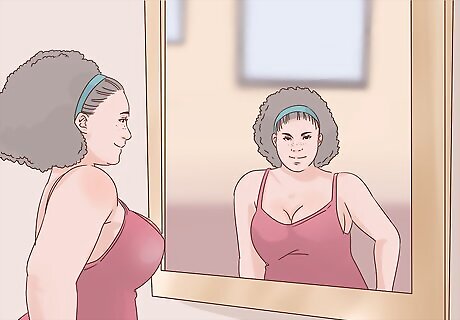
Try it on. When you find something you like, be sure to try it on first. See how it fits your body. Think about what you have at home that might be worn with it. If you are uncertain about how this piece would match other pieces, mix and match it with other items available at the store. Make sure that you are in love with it before you buy it.
Developing a Unique Look
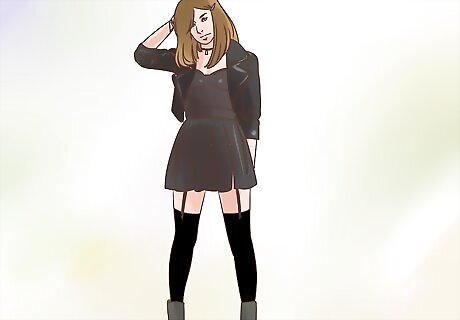
Wear your favorite colors. When you shop, try to find clothing that comes in your favorite colors. Choose a color palette, or mix and match what looks good to you. Try to wear at least one piece of clothing or accessory each day with that color; ties, scarves, and bags are a good way to add a pop of color to your outfit. Quickly, people will begin to associate it with you.Some color palettes include: Neutrals: black, white, brown, navy blue, gray Universals: off-white, gray, teal, lavender, purple, taupe Warm: dark green, purple, brown, yellow, blue Cool: bright red, blue, pink, white, black
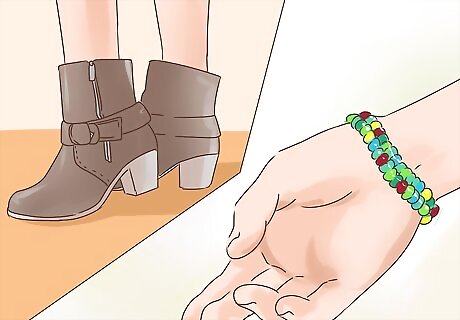
Accessorize. Accessories are how you make off-the-rack styles look unique and special. Gather a collection of different accessories that can you can pair with different outfits. Use these items to make old outfits look new every time you wear them. Some good accessories include: Shoes Jewelry such as necklaces, bracelets, cuff links, and rings Ties Scarves Gloves Belts Hats Hair ornaments such as headbands, hair sticks, and scrunchies
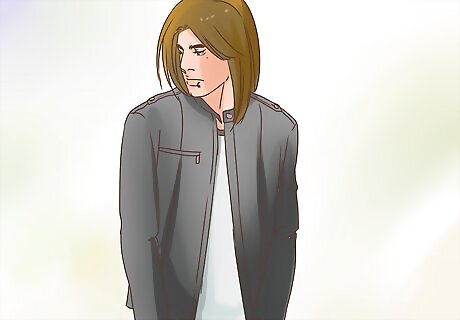
Find a signature item. For your style to be truly unique, you will want to mark yourself off with a signature piece that you wear frequently. This could be a particular color or print, a special necklace, or a favorite jacket. When people see this style, they will start to associate it with you. When choosing your signature item, ask yourself: Is there a particular piece of jewelry that is special to me? Is there something that looks good with every outfit that I own? What is my favorite bag? Favorite shoes? Favorite coat or sweater? Is there a type of clothing that I wear that might be considered unusual, such as funky tights, floppy hats, or rainbow gloves?
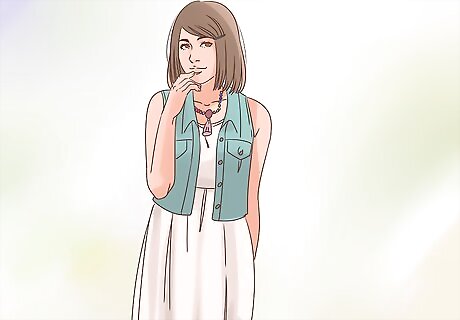
Mix and match styles. Do not feel limited to just one style or type of clothing. Many people have many styles that they adopt and mix together. The way you blend different styles can help you stand out. Experiment with different types of clothing, and see if you can work out a combination that works for you.
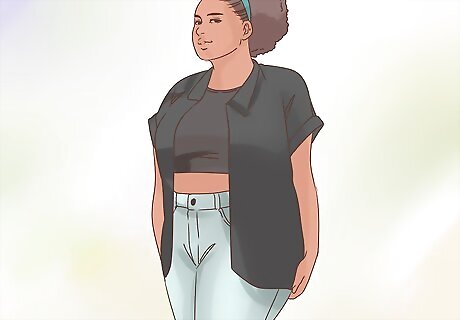
Wear what makes you feel good. The key to style is confidence. You want to buy and wear pieces that make you feel beautiful, handsome, or sexy. Your friends, family, and significant other should not decide what your style is. Above all else, make sure you have pieces that you love.













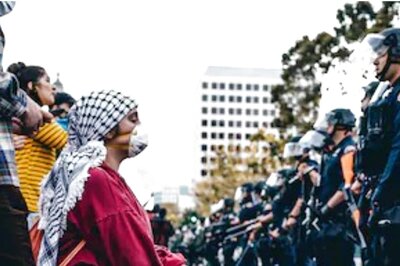


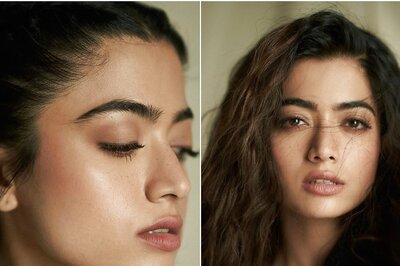



Comments
0 comment